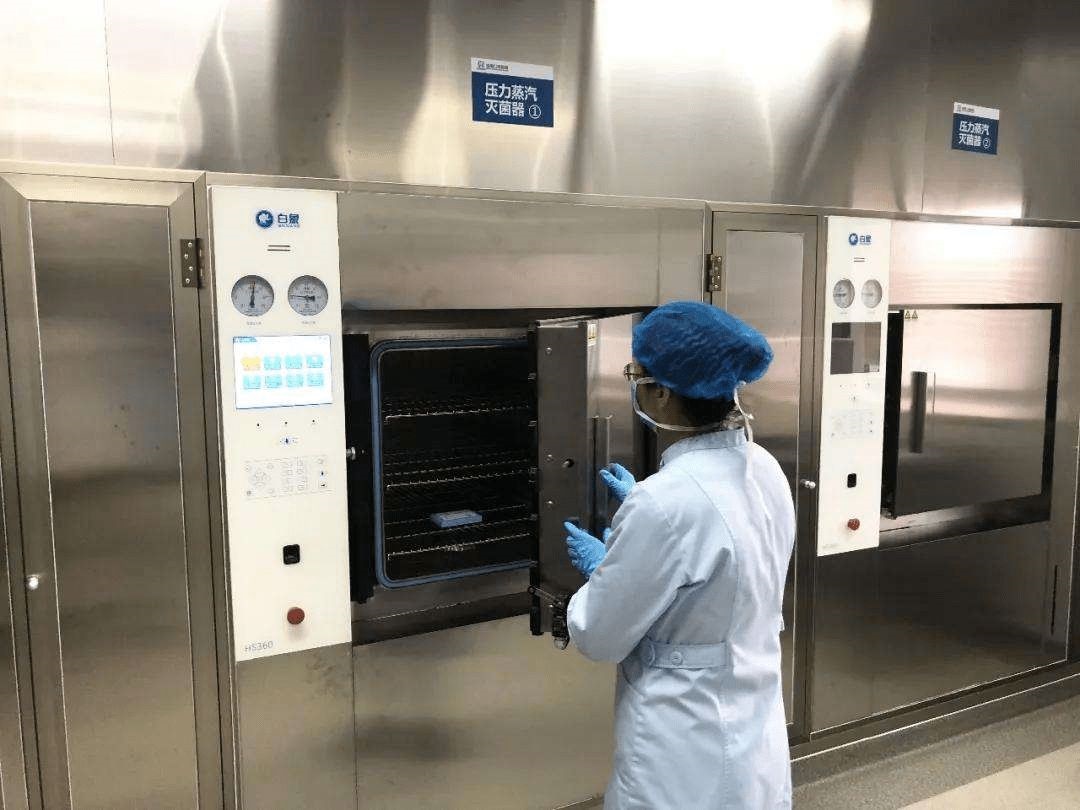一般的な医療用滅菌方法は何ですか?
2022-01-25

滅菌とは、物理的または化学的方法を使用して、多数の耐性菌胞子を含むすべての微生物を破壊することです。. 使用中の感染や病気の蔓延を防ぐために無菌にしてください.
一般的な医療滅菌方法には次のものがあります。: 乾熱滅菌, 湿熱滅菌, ガス滅菌, 放射線滅菌, フィルター滅菌, 等. 以下にこれらの滅菌方法を簡単に紹介します。
乾熱滅菌
アイテムを乾熱滅菌キャビネットに置きます (箱), 乾燥熱風を使用して微生物を死滅させたり、発熱性物質を除去したりする.
適用範囲: ガラス製品, 金属製の食器, 高温には耐えるが湿熱滅菌を行うべきではない品目も、すべてこの方法で滅菌できます。.
乾熱滅菌条件は一般的に次のとおりです。 (160-170℃)×120分以上, (170-180℃)×60分以上または250℃×45分以上.
乾熱滅菌を使用する場合, 滅菌するアイテムは、適切な装填方法を備えている必要があり、滅菌の有効性と均一性を確保するために密に配置しないでください。.
乾熱滅菌で最も一般的に使用される生物学的指標は、枯草菌の胞子です。.
湿熱滅菌
殺菌剤に入れて微生物を殺す方法 (ポット), 高圧飽和蒸気を使用して微生物細胞内のタンパク質と核酸を変性させます。. この方法は強力な滅菌能力を持ち、加熱滅菌において最も効果的で広く使用されている滅菌方法です。.
適用範囲: 緩衝液, 培地, きれいな服, ガラス製品, 感染性の汚れや、高温多湿にさらされても変化したり破損したりしないもの.
湿熱滅菌は通常121℃×15minまたは121℃×30minが採用されます。. 滅菌中, 滅菌済みのアイテムは適切な方法で積み込む必要があります, 滅菌の効果と均一性を確保するために、あまり密に配置しないでください。.
湿熱滅菌に最も一般的に使用される生物学的インジケーターは、Bacillus stearothermophilus 胞子です。.
ガス滅菌
化学消毒剤によって生成されるガスを使用して微生物を殺す. ガス滅菌はオゾン滅菌とエチレンオキサイド滅菌に分かれます。.
1. オゾン殺菌・消毒
オゾンには強力な殺菌・消毒効果があります. 滅菌・消毒の原理は、: オゾンの分子構造は常温常圧では不安定です。, そしてすぐに酸素と単一の酸素分子に分解されます。. 後者は活性が強く、細菌に対して強い酸化作用を持ちます。. 細菌のグルコースを酸化するために必要な酵素, それによって細胞膜を破壊する, それを殺す.
2. エチレンオキサイド滅菌 (並ぶ) 方法
エチレンオキサイド滅菌とは、エチレンオキサイドガスを用いて滅菌する方法です。. 作業服の滅菌にも応用できる伝統的な滅菌方法です, 医療器具, 設備, および加熱滅菌に耐えられない器具. エチレンオキシド滅菌システムには主に以下の 4 つの重要な要素があり、相互に滅菌効果を制限します。:
①湿度; ②温度; ③ガス濃度; ④滅菌時間.
エチレンオキシドは非常に強い浸透力と拡散力を持っています。, その殺菌メカニズムは主に強力な酸化です。, したがって、広範囲の滅菌と強力な滅菌能力の特性を備えています。, 微生物の繁殖体や胞子に対して強力な殺傷効果があります。. .
放射線滅菌
1. 電離放射線
電離X線による滅菌, ガンマ線.
微生物に対する電離放射線の致死的影響は主に細胞内の生化学の変化によって引き起こされます.
放射線照射を受けた医薬品や食品の安全性の問題: 医薬品や食品の放射線滅菌は安全性試験を受ける必要がある. 科学的かつ総合的な評価が絶対に必要, 高線量の放射線の使用には注意が必要です.
2. 電磁波放射
(紫外線も含めて [波長190~350nm], 赤外線 [波長0.77~1000μm], 電子レンジ [波長1~1000mm]).
3. 紫外線殺菌
紫外線が微生物に照射されると, エネルギーの移動と蓄積が起こる, そしてその蓄積により微生物が不活化されます。, それにより消毒の目的を達成します. 細菌やウイルスが3600~65000uW/c㎡以上の線量を吸収した場合, デオキシリボ核酸に対する強力な破壊力を持っています。 (DNA) そしてリボ核酸 (RNA) 細菌やウイルスの, 細菌やウイルスの生存力と繁殖力を失う可能性があります. 細菌やウイルスを除去し、除菌・滅菌効果を発揮します。.
フィルター滅菌
培地から微生物を物理的に除去する. 空気や液体中の微生物や不純物は、無菌状態を得るために、さまざまな材質で作られたメンブレンフィルターでろ過されることがよくあります。, 不純物のない空気または液体.
ウイルスを濾過するフィルター膜の孔径は 25 ~100nm; バクテリアをろ過するためのフィルター膜の孔径は 0.22 ~0.45μm
一般的な5つの滅菌方法を詳しく理解した上で, 誰もがより明確に区別できるように概要表を作成しました
労働条件, さまざまな滅菌方法の適用範囲と制限.
















